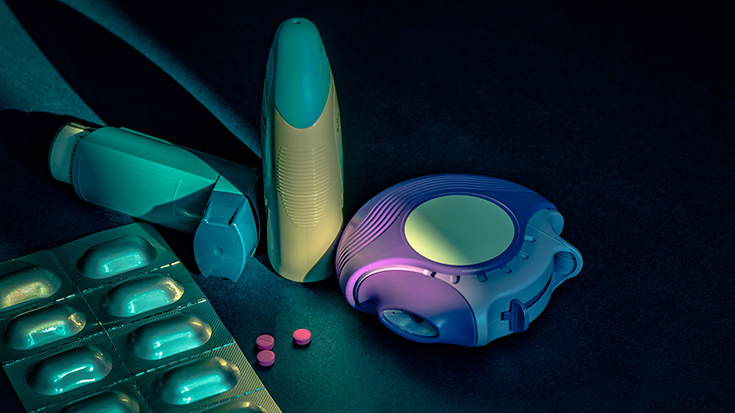
Dry powder inhalers (DPIs) came on the market in response to the uncertain future facing pressurized metered dose inhalers (pMDIs) containing CFC propellants known to contribute to the depletion of the ozone layer. The phase-out of those propellants drove the development of DPIs, which are now considered to hold the greatest potential for new and improved inhalation therapy administration.
Two leading respiratory care researchers in the area of aerosol delivery explain what RTs need to know about these devices.
Advanced technology
“DPIs are increasingly used in the treatment of patients with pulmonary diseases because they represent advancement in inhalation technology with a compact breath actuated design that eliminates the use of propellants and the need for hand-breath coordination for aerosol drug delivery,” said Arzu Ari, PhD, RRT, FAARC, a professor of respiratory care at Texas State University.
She says DPIs simplify the inhalation technique, provide reproducible doses, and improve patient compliance and adherence to aerosol therapy. Like pMDIs, DPIs are capable of depositing up to 80 percent of the dose, and when used correctly, they are just as effective as other aerosol delivery devices. However, they are associated with a higher incidence of cough than liquid nebulizers or pMDIs.
Jim Fink, PhD, RRT, RRT-NPS, FAARC, chief science officer at Aerogen Pharma Corp, and adjunct professor of respiratory therapy at Georgia State University, notes dry powders are popular for formulations that are not stable in aqueous solutions at room temperature.
“They provide a larger dose than pMDIs or Soft Mist Inhalers, and typically a lower dose than a nebulizer,” he said. “A great deal of engineering is involved in designing both the powders, packaging and devices.”
Four steps
Like all aerosol delivery devices, however, DPIs are only effective when they are properly used, and that means respiratory therapists need to educate their patients about proper inhaler technique.
Drs. Ari and Fink suggest therapists follow these four steps when educating patients about their DPIs:
- Provide one-on-one patient training: Individualized patient training with demonstration and return demonstration will be more effective than group training.
- Take a deep and fast inspiration through the DPI: Respiratory therapists should educate their patients to take a deep and rapid inspiration through the DPI during therapy. Generating a sufficient inspiratory flow rate triggers release and disaggregates the drug from the capsule or enclosure, optimizing emitted aerosol dose and particle size that can reach the lungs. Patients achieve optimal deposition from the device when the correct flow rate is achieved and sufficient volume has been inhaled. This reinforces and promotes improved compliance with the prescribed aerosol therapy.
- Proper storage is important: Water, moisture in the air, and exhaled humidity can cause dry powder to clump and clog the DPI within a fraction of a second of exposure. Patients should not store the inhaler in the bathroom and never exhale into the device during therapy. They should never submerge the inhaler in water.
- Follow-up: Respiratory therapists should always follow-up with their patients to ensure correct use of aerosol devices and patient adherence to therapy. Ask your patients to bring their DPIs to the clinic or office so they can demonstrate how they use their inhaler. Follow up will provide a chance for additional training, again with demonstration/return demonstration.
Improvements ahead
As scientists continue to refine DPI technology, patients with chronic lung conditions are likely to see even more benefits from these devices in the future.
“DPI formulations and device designs are rapidly evolving, making for more consistent dosing across a broad range of inspiratory efforts,” Dr. Ari said. “New aerosol devices are starting to provide feedback about inhalation technique during aerosol drug delivery to the patient.”
Dr. Fink adds, “Digital innovation, recording and reporting patient adherence data, is on the horizon.”
Looking for More on Aerosol Delivery Devices?
Review our Aerosol Delivery Guides to learn more about aerosol therapy. For RTs, you can earn 6 hours of CRCE.
Email newsroom@aarc.org with questions or comments, we’d love to hear from you.














